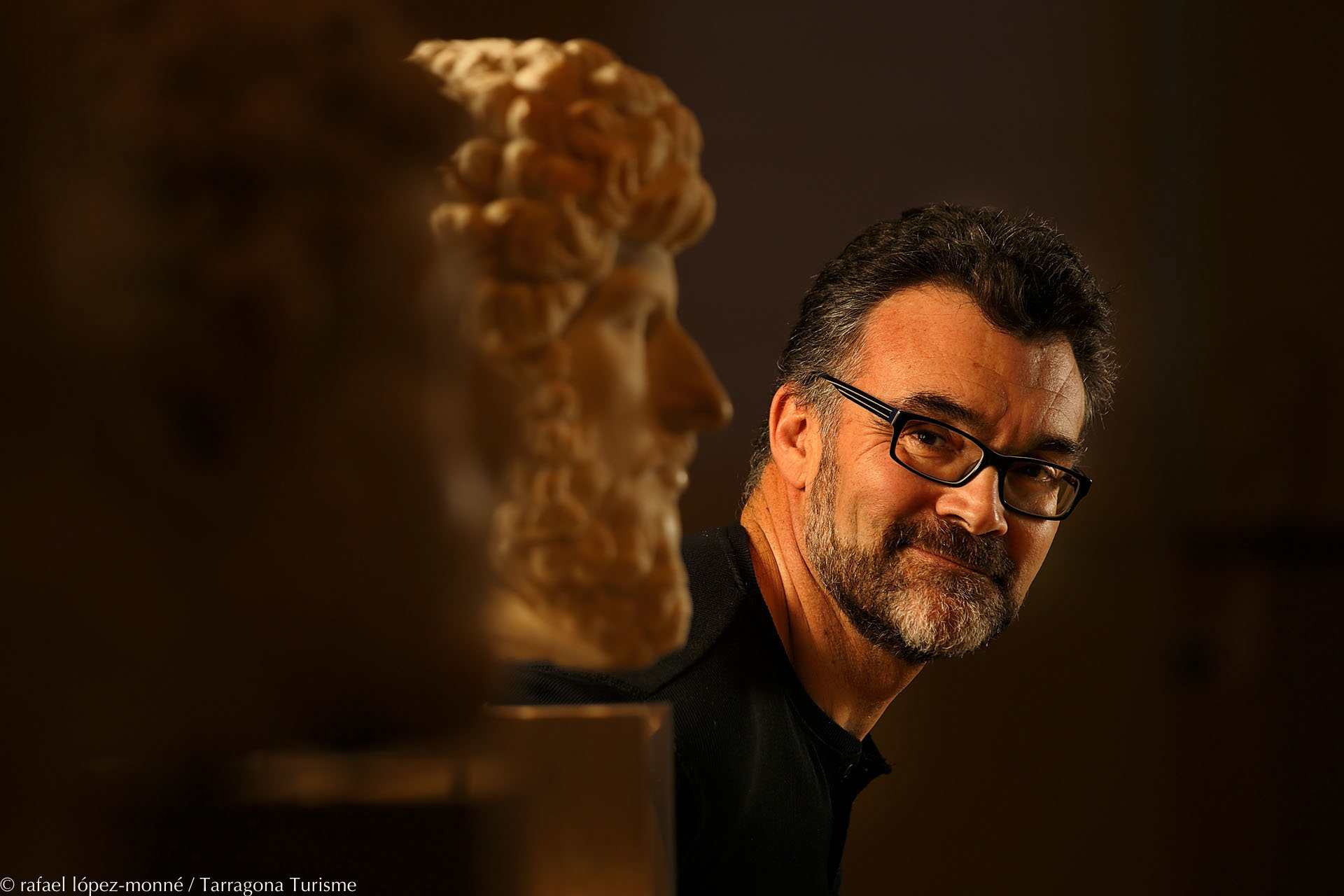José Coronado and his family live in a mind-blowing house by the sea, in Tamarit. Julio Manrique keeps his car in a garage at Pla de la Seu, just opposite the Cathedral. And hidden in Casa Corderet’s back room, in Carrer Merceria, there is an exclusive chess academy, which is also… wait for it, the library of the ‘Centre de Lectura’ of Reus. Life in Fill de Caín, the awarded début film by Jesús Monllaó, takes place around Tarragona, a set with huge potential which, thanks to its festivalish nomination, is now well-known in places such as Mumbai, La Habana, Montreal, Moscow, Miami or Berlin.
Monllaó, Anglo Germanic philologist, had been looking forward to such an opportunity for years. In the late 90s, he left Tarragona to study a doctorate in literature in England. In Canterbury, he experienced the solitude of the immigrant and managed to survive with little, very little, which gave him time to think… and thus he realised that his main purpose in life should be to tell stories; to become a film director. He got trained and got back home in 2000, convinced of being able to make films.
However, the film he had been looking forward to has taken much time, and it has been released just when both Spanish and Catalan film industry are going through rough times, with less productions than ever before. Until now, Monllaó has directed three short films, which have succeeded in the corresponding categories –La Mirada oblicua, Gloria and El legado–, he has also made a documentary, and some TV adds, and has continued to work almost as anything, just as he used to do back in England. He actually adapted the script for Fill de Caín while he was working as a night watchman in a campsite.
Being an active and determined man, the very same determination which had helped him become a boxer and body builder, Monllaó always knew that his aim was to shoot a film in Tarragona. And, despite the fact that the city had never had cinematographic models, he was never taken seriously at first. “People didn’t really get it. They would look at me utterly shocked, and I was even told to give it try in Hollywood. Instead, I always believed in the possibilities of a city that I love and to which I owe the world”, says the director.
Fill de Caín, which didn’t make to the Goya Awards due to bureaucratic issues but which has been selected by the EU as one of the best movies in 2013 that will represent Europe on international cinema festivals, has been qualified as a “Mediterranean thriller” and shows Tarragona’s potential as a film set. Monllaó has financed the film thanks to monetary contributions by local institutions. Nonetheless, he claims he was not aiming for the city to become any sort of display window: “My purpose was to tell a story the best I could. Tarragona sells by itself”.
The film, awarded in Malaga and Tudela film festivals, will resume its tour and will virtually take Tarragona to Poland, France and Australia. It has a range of real lights, faces and locations which, according to Monllaó, is suitable for all genres: “Tarragona is the perfect scenery for a romantic plot. It would actually inspire Ridley Scott for a futuristic film too, a sort of post apocalyptic dystopia”. Can you imagine a Blade Runner sequel set in Southern Europe’s most important chemistry industrial site?
*We would like to thank the manager of the National Archaeological Museum of Tarragona (MNAT), Francesc Tarrats Bou, due to his permission that allowed us to take this report’s cover photograph inside the building.
Text: Oriol Margalef (@ohmargalef on Twitter)
Translation by: Artur Santos (@artur_1983 on Twitter)
Photography: Rafael López-Monné (@lopezmonne on Twitter)




